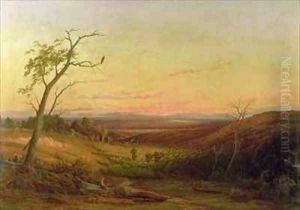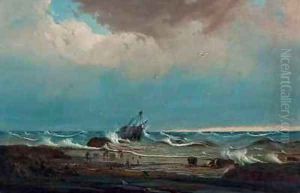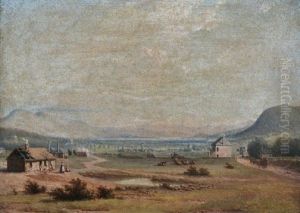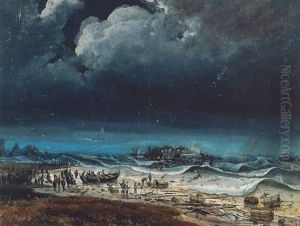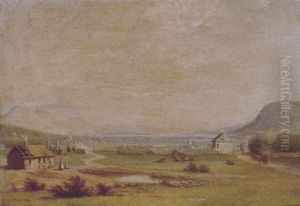Knud Geelmuyden Bull Paintings
Knud Geelmuyden Bull was a Norwegian painter, known for his landscapes, portraits, and marine subjects. Born on May 13, 1811, in Bergen, Norway, Bull was part of a prominent family; his father was a merchant and his mother came from a well-regarded clerical family.
During his early years, Bull showed an interest in art and began his artistic education in his hometown. His talent was apparent, and he went on to study at the Royal Danish Academy of Fine Arts in Copenhagen. It was here that he developed his skills and was influenced by the Golden Age of Danish painting, which emphasized the beauty of the natural world and the play of light and atmosphere.
However, Bull's life took a dramatic turn when he decided to emigrate to Australia in 1841. His motivations for leaving Norway remain a subject of speculation, with some suggesting that it was for adventure, while others hint at troubles at home. Arriving in Australia, Bull worked various jobs, including gold mining, but continued to paint and document his experiences in the new world. His Australian works provide valuable insights into the life and environment of the colonial period.
Bull's time in Australia was marred by controversy. In 1851, he was convicted of issuing a forged check and sentenced to a prison term on the notorious penal colony of Tasmania. His experiences as a convict were harsh, but they did not deter him from continuing to paint. Bull produced a series of works depicting the Tasmanian landscape and scenes of convict life, which are now recognized for their historical significance.
After his release, Bull struggled with life in the colonies and eventually returned to Europe, settling in Paris. He continued to paint and exhibit his works, which included both European and Australian subjects. Bull's later works reflect a mature artist with a strong command of his medium, yet they never achieved the fame or financial success he might have hoped for.
Bull died in Paris on March 24, 1889. His legacy endures through his artwork, which provides a unique cross-continental perspective and stands as a testament to his skill and adaptability as an artist. His paintings are held in various collections, including the National Gallery of Australia, and are appreciated for their historical value as well as their artistic merit.
